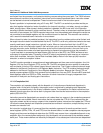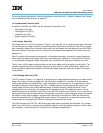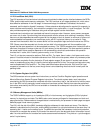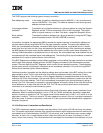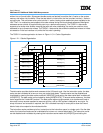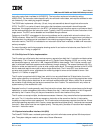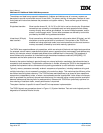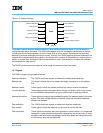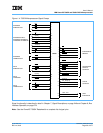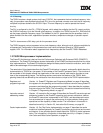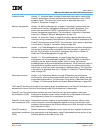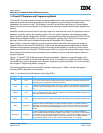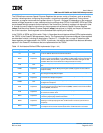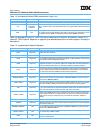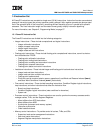
User’s Manual
IBM PowerPC 750GX and 750GL RISC Microprocessor
PowerPC 750GX Overview
Page 38 of 377
gx_01.fm.(1.2)
March 27,2006
Note: A bar over a signal name indicates that the signal is active low—for example, ARTRY (address retry)
and TS
(transfer start). Active-low signals are referred to as asserted (active) when they are low and as
negated when they are high. Signals that are not active low, such as A[0–31] (address-bus signals) and
TT[0–4] (transfer type signals) are referred to as asserted when they are high and as negated when they are
low.
1.2.8 Signal Configuration
Figure 1-4 shows the 750GX’s logical pin configuration. The signals are grouped by function.
Interrupt These signals include the interrupt signal, checkstop signals, and both soft reset
and hard reset signals. These signals are used to generate interrupt exceptions
and, under various conditions, to reset the processor.
Processor status/control These signals are used to indicate miscellaneous bus functions.
Clocks These signals determine the system clock frequency. These signals can also be
used to synchronize multiprocessor systems.
Test and control The common on-chip processor (COP) unit provides a serial interface to the
system for performing board-level boundary scan interconnect tests.



